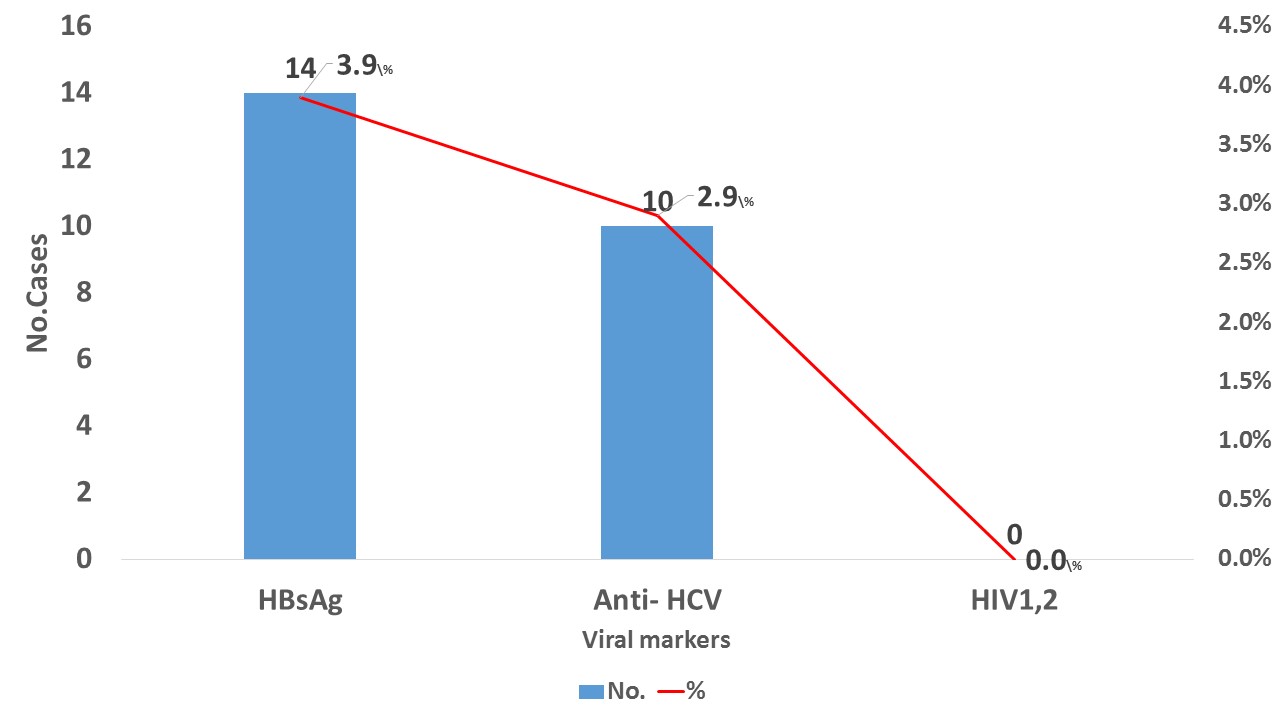Prevalence and risk factors for blood-borne viruses among multi-transfused patients in Sana'a City, Yemen
Main Article Content
Abstract
Background: Blood-borne viruses (BBVs), like hepatitis B virus (HBV), hepatitis C virus (HCV), and human immunodeficiency virus (HIV) among multi-transfused patients (MTPs), remain a major public health problem in Yemen. This study aimed to determine the seroprevalence of BBVs and associated risk factors among MTPs.
Methods: A cross-sectional study was conducted on MTPs at the Yemeni Society for Thalassemia, National Oncology Center, and Al Kuwait University Hospital in Sana’a City. Data were collected through face-to-face interviews using a predesigned questionnaire. Blood samples were drawn and tested for HBsAg, anti-HCV, and HIV-1,2 by using an electrochemiluminescence immunoassay technique.
Results: Among 361 MTPs, the overall seroprevalence of BBVs was 6.8%; seropositivity of HBsAg, anti-HCV, and anti-HIV-1,2 was 3.9%, 2.9%, and 0.0%, respectively. An increase in family size and low income were significantly associated factors with HBV infection. In addition, increases in age and blood transfusion units were found to be significant predictors for HCV (p<0.05).
Conclusion: Although the seroprevalence of BBVs is low, it remains a major problem among MTPs. The most frequent infection was HBV, followed by HCV, with a significantly higher rate among leukemia patients. Regular mentoring for viral markers and mandatory implementation of HCV antigen-antibodies testing as well as advanced technology in blood screening are highly recommended.
Downloads
Article Details

This work is licensed under a Creative Commons Attribution-NonCommercial-NoDerivatives 4.0 International License.

